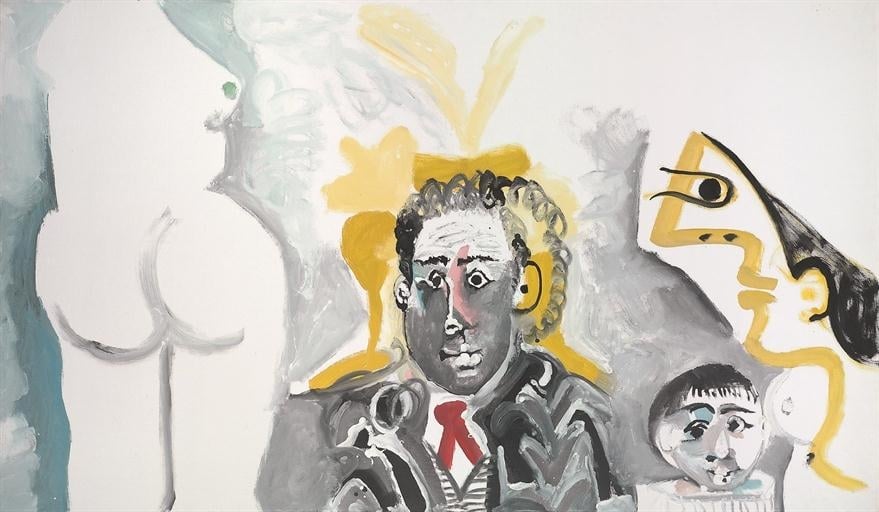Law & Politics
US Art Dealers May Soon Be Subject to Government Financial Regulation
The art world has been put on high alert with news of new government oversight.

The art world has been put on high alert with news of new government oversight.

Eileen Kinsella

The art world has been put on notice.
After years of whispers—and a lot of grumblings—about the need to achieve greater transparency in the ultra-secret, multi-billion dollar art market, US lawmakers appear to be moving fast on new legislation to do just that. With more and more trophy artworks tipping the seven- eight- and even nine-figure mark, the stakes have never been higher.
Days after the European Union voted to adopt tighter restrictions on the art trade, US clients of a leading art law firm were warned on Monday that legislators have their sights trained firmly on art dealers and the market.
“The House Financial Services Committee is drafting legislation that would add ‘dealers of art and antiquities’ to the list of regulated financial institutions,” according to a memo that art experts Pearlstein, McCullough & Lederman sent to its clients on April 30. The increased oversight would fall under the umbrella of the Bank Secrecy Act, which already monitors a variety of players ranging from financial institutions, brokers, and insurers to jewelry and precious metal dealers.
“This is the first type of regulation in the US that will affect the entire art market,” attorney Michael McCullough told artnet News. “So it will have a major effect on dealers large and small. We have had regulations in different areas—antiquities have been regulated and authorities have put restrictions on cultural property. This is the first that covers the whole market so I do think its significant.”
A representative for the House Financial Services Committee did not respond to artnet News’s request for comment.
“The new law would zero in on the beating heart of the art market: the financial relationship between dealers and their clients,” said attorney and art law expert Thomas C. Danziger, of Danziger, Danziger & Muro in an email to artnet News. “The underlying assumption,” he says, “is that much of the strength of the market comes from its anonymity, and the fact that expensive works of art can easily be bought, sold, stored, and shipped around the world without anyone knowing who the owner is.”
The committee will likely introduce the legislation during the week of May 14, according to the memo. Once the legislation is passed, the Treasury Department’s Financial Crimes Enforcement Network (FinCEN) will draft regulations to lay out how dealers in art and antiquities are supposed to establish their anti-money laundering programs, the memo states.
In an email responding to artnet News’s request for more information, the FinCEN “resource center” wrote that, as of now, it has not proposed any new rules for dealers:
FinCEN has not propose[d] a rulemaking to include dealers in art and antiquities under the definition of a ‘financial institution’ that would be subject to Bank Secrecy Act regulation. While there has been plenty of discussions about the potential benefits that could result [from] subjecting a number of different industries to BSA regulation. . . upon searching our website, you will find that there is little, if any mention of that industry in particular in any FinCEN publication.
That doesn’t align with the Pearlstein client memo, however. At a minimum, the memo suggests that anti-money laundering laws will require dealers to establish Bank Secrecy Act compliance programs and customer due diligence and monitoring programs. It will likely also require that they screen for potential problems or clients against a list generated by the Office of Foreign Assets Control (OFAC), as well as other government lists. In addition to anti-money laundering programs, dealers will also need to establish suspicious activity monitoring programs and reporting processes, the memo asserts.
The latest push to regulate the art market follows testimony at a closed-door session of the House Financial Services committee three weeks ago. According to the Pearlstein memo, prosecutors from the Department of Justice and the New York District Attorney’s Office gave testimony about recent cases. One such case was reportedly the indictment in New York of UK art dealer Matthew Green along with several finance experts in a $50 million money laundering scheme, which included a $9 million Picasso titled Personnages (1965).
This isn’t the first time FinCEN has tightened regulations for dealers. In 2005, the body announced regulations for dealers in precious metals, stones, or jewels, requiring them to establish anti-money laundering programs. Those regulations, however, excluded auctioneers, who could be included in the upcoming legislation.
McCullough, who spent a decade at Sotheby’s as associate counsel, says major auction houses such as Sotheby’s and Christie’s already have anti-money laundering protocols in place. The extent to which the houses would be affected by new, tighter oversight is unclear.